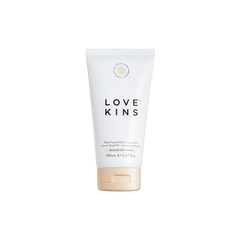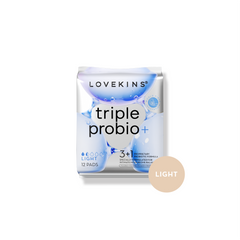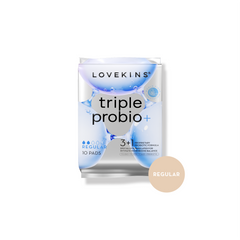This blog is written by midwife Aliza from Bumpnbub.
Nappy rash is a common skin condition for children, especially newborns and toddlers. It can develop on your baby’s bottom and genitals due to irritation from wearing a nappy and is often red and inflamed in appearance. Nappy rash makes your little one’s bottom sore and can be swollen or have breaks in the skin known as excoriation. Having nappy rash is uncomfortable and can cause your baby to display irritable behaviour or signs of pain, especially when changing their nappy. If the rash appears uncomfortable for them, you can offer your baby paracetamol or ibuprofen if it is appropriate (in consultation with a health professional). Nappy rash also increases the risk of urinary tract and vaginal infections for girls, so it’s important to try and prevent nappy rash.
WHAT CAUSES NAPPY RASH AND WHAT MAKES IT WORSE?
The main cause of nappy rash is wearing a wet or dirty nappy for extended periods of time. Urine and faeces contain a chemical called ammonia, which can irritate your baby’s skin.
- Nappy rash can also occur from poor quality nappies not soaking up the wetness, therefore prolonged dampness occurs which causes irritation. It’s important to choose absorbent, high-quality nappies like Lovekins nappies.
- Using baby wipes containing alcohol or a preservative called methylisothiazolinone on the bottom can cause nappy rash
- If your little one has sensitive skin, some products can irritate their skin more than others, especially lotions or wipes with fragrance. Lovekins Nappy Cream is plant-based, soothing and endorsed by the Australian College of Midwives.
- Friction between the nappy and the skin can be enough to cause nappy rash or make a rash worse, especially if the nappy is on too tight
- Highly acidic foods can make nappy rash worse (tomatoes, citrus fruits, strawberries), so try and limit these foods when your little one has a nappy rash or change them as soon as you notice they have a dirty nappy
- If your baby has conditions such as thrush, eczema or psoriasis, these can make any rash on the body worse including nappy rash
- If your baby is prescribed antibiotics or you are taking antibiotics and breastfeeding, this can disrupt the bacteria that prevents nappy rash, so they are more likely to get irritated skin and a rash

DOES NAPPY RASH NEED MEDICAL ATTENTION?
A nappy rash will normally heal within a few days with some basic treatment. For severe nappy rash (cracked skin on a large area of the bottom) that won’t go away with simple measures, see your GP to have the rash reviewed. They may suggest a medical cream for your little one.
It’s also important to take your little one to a GP or a paediatrician if they have an unexplained fever, the nappy rash hasn’t improved after a week of treatment, the rash is spreading, blisters or pimples appear, is really upset and not sleeping, or if you are concerned at all.
4 TIPS ON TREATING YOUR BABY’S NAPPY RASH:
Prevention is always better than treatment, but if the nappy rash does occur treatment is aimed at repairing the damaged and irritated skin and protecting it from any dampness and friction that might cause more damage.
1. APPLY BREASTMILK AND HAVE NAPPY FREE TIME
Breastmilk is full of healing properties and contains anti-inflammatory antibodies which are perfect for treating nappy rash and helping to improve any infection. You can express fresh breastmilk or use some from the fridge or freezer. Simply pat breastmilk onto the reddened area and let it dry before putting your baby’s nappy on, or better yet give your baby some nappy free time. Fresh air is the best way to let your baby’s nappy rash heal. If you have a good collection of expressed breastmilk, you can also put some in the bath to soothe bubs irritated skin, and when used regularly breastmilk can clear up nappy rash quickly and naturally.
Nappy free time is recommended if possible every day, whether your baby has nappy rash or not. Time without a nappy on allows your little one’s bottom to air and reduce any friction. Your baby can have play or sleep time with no nappy on, just place a towel underneath them. If you are wanting to combine fresh air and breastmilk, tummy time is the perfect solution. Strip your baby's clothes off and clean their bottom, place them on their tummy (don’t forget a towel) with toys or a book in front of them, apply your breastmilk to the rash and let it get to work. If you are unable to give your little one any time with their nappy off, an alternative is to put your baby’s nappy on loosely or use a larger nappy which will allow more airflow through the nappy.

2. CHANGE NAPPY FREQUENTLY
Changing your baby’s nappy regularly is important in treating nappy rash. There are two reasons for changing their nappy frequently; the first reason is to minimise the time urine and faeces are sitting against their skin, and the second reason is to keep their bottom as dry as possible. Keeping your little one’s skin dry gives it a chance to heal. Check your baby’s nappy every hour or two to see whether it is wet or dirty, and try to change it straight away.
It is good to be aware that disposable nappies absorb more moisture than cloth nappies, therefore drawing the moisture away from your baby’s bottom. Nappy rash is more common if your baby is wearing cloth nappies due to being less breathable. If you are using cloth nappies, consider switching to a natural disposable nappy like Lovekins nappies, even for a short time until the rash has healed. Ensure you rinse cloth nappies thoroughly in water to get rid of any soap residue, and dry well before use.
3. KEEP RASH CLEAN, INCLUDING REGULAR BATHS
If your baby has a nappy rash, keep it as clean as you can with natural wipes and frequent baths. When changing their nappy, gently clean bub’s bottom well with fragrance-free wipes or a warm cotton cloth and remember to wipe from front to back. Organic/natural baby wipes can be gentler on their skin and less likely to cause irritation.
As well as cleaning your baby’s bottom at nappy changes, regular baths are also necessary to clean the rash thoroughly. Using gentle, nourishing and pure products like Lovekins Baby Skincare range helps to soothe and protect sensitive skin. Baths are generally recommended every 2-3 days with newborns, but if bub has a nappy rash you can bathe them every day to ensure it is kept nice and clean. When you bathe your baby use a gentle soap-free wash. After the bath, pat your baby’s skin to dry well and apply a barrier cream, like Lovekins Nappy Cream.

4. NAPPY RASH BARRIER CREAM
After you have cleaned your baby’s bottom with fragrance-free wipes, apply a layer of all-natural, plant-based protective barrier cream to the rash. Using a protective barrier cream after each nappy change will help protect your baby’s bottom as well as heal any rash that is present. A cream like Lovekins Nappy Cream that contains zinc oxide is a good choice as this creates a protective layer on the skin and relieves irritation. You need the cream to be thick enough to create a barrier that stops urine and faeces from getting into the skin, so applying it to the bottom without rubbing it in is suggested. Lovekins Nappy Cream is enriched with Kakadu Plum (richest source of Vitamin C on earth), Avocado Oil, Shea Butter and Australian Blue Cypress essential oil to nourish and calm delicate soft skin.
The contents of this blog does not replace medical advice and is general advice and suggestions only. Always consult your healthcare professional.













